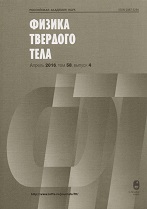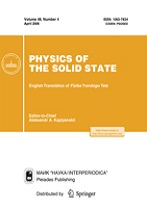|
This article is cited in 6 scientific papers (total in 6 papers)
Graphenes
An effect of chemical modification of surface of carbon nanotubes on their thermal conductivity
A. V. Savinab, O. I. Savinab
a N. N. Semenov Institute of Chemical Physics, Russian Academy of Sciences, Moscow
b Plekhanov Russian State University of Economics, Moscow
Abstract:
An effect of partial chemical modification of the surface of a single-walled carbon nanotube on its thermal conductivity is studied. Numerical simulation of heat transfer showed that partial hydrogenation (fluorination) of a nanotube (addition of hydrogen and fluorine atoms from its outer side) can lead to more than a tenfold decrease in thermal conductivity. When the length of the nanotube increases, its thermal conductivity increases in proportion to the logarithm of the length, whereas the proportionality coefficient decreases with an increase in density of hydrogen or fluorine atoms attached. A thermal conductivity reduction coefficient does not depend on the length of the nanotube, but depends on temperature (the lower the temperature, the stronger the decrease) and density of the attached atoms $p$. When
$p<$ 0.25, an increase in density monotonically decreases the thermal conductivity. A decrease is maximum, when density $p$ is 0.25. If only one half of the nanotube is hydrogenated, this half has a lower thermal conductivity. Such a nanotube becomes anisotropic and can be used as a heat transfer rectifier with no more than two percent rectification efficiency.
Received: 27.06.2018
Citation:
A. V. Savin, O. I. Savina, “An effect of chemical modification of surface of carbon nanotubes on their thermal conductivity”, Fizika Tverdogo Tela, 61:2 (2019), 409–414; Phys. Solid State, 61:2 (2019), 279–284
Linking options:
https://www.mathnet.ru/eng/ftt8936 https://www.mathnet.ru/eng/ftt/v61/i2/p409
|


| Statistics & downloads: |
| Abstract page: | 40 | | Full-text PDF : | 9 |
|





 Contact us:
Contact us: Terms of Use
Terms of Use
 Registration to the website
Registration to the website Logotypes
Logotypes







 Citation in format
Citation in format 
